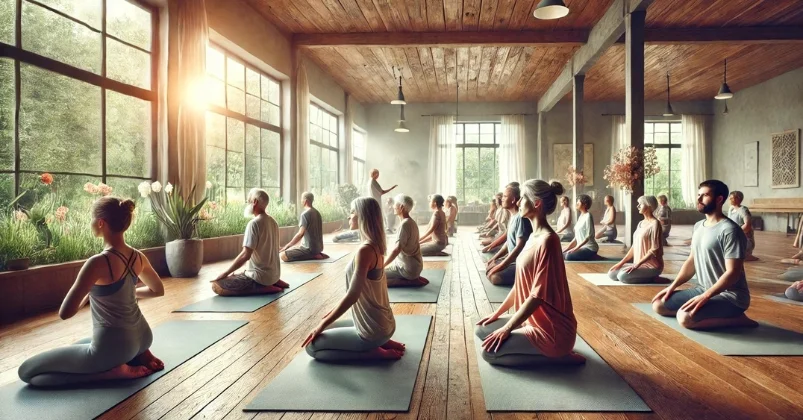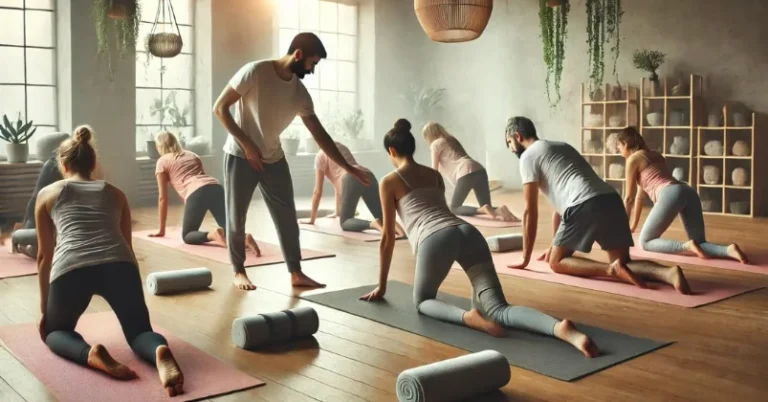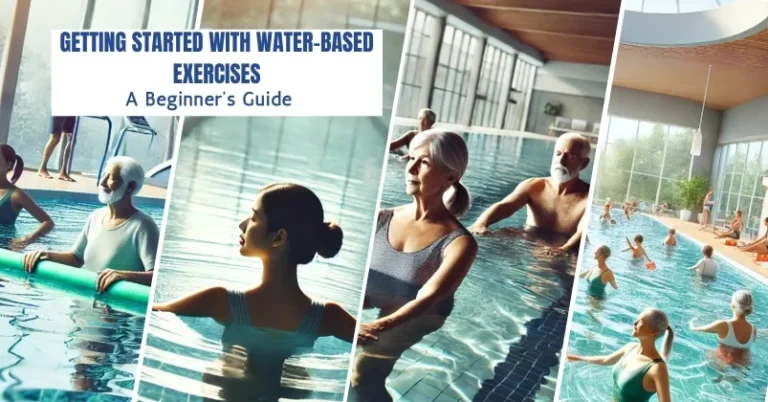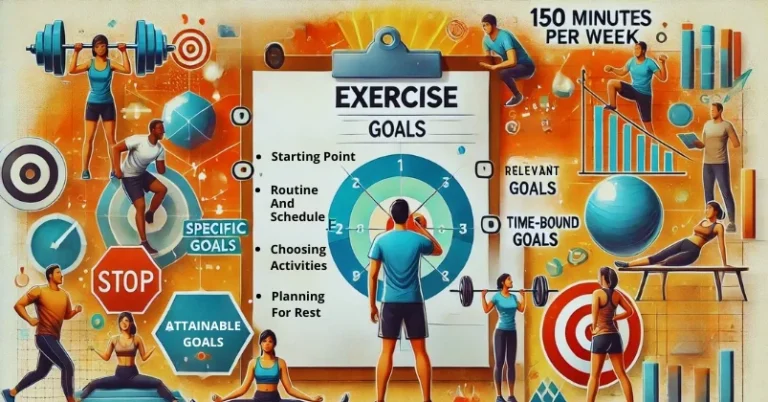Gentle Yoga: A Soothing Practice for All Ages and Abilities
Gentle yoga is a type of yoga that is perfect for people who want to enjoy the benefits of yoga without pushing their bodies too hard. It is a slow-paced form of yoga suitable for people of all ages and fitness levels. Gentle yoga is ideal for people recovering from an injury, having limited mobility, or simply wanting to relax and de-stress.
Understanding gentle yoga is essential for anyone who wants to start practicing it. It is a type of yoga focused on relaxation, breathing, and stretching. Gentle yoga is not about pushing yourself to your limits but listening to your body and doing what feels comfortable. It is a great way to improve flexibility, balance, and strength and reduce stress and anxiety.
Key Takeaways
- Gentle yoga is a slow-paced form of yoga that is suitable for people of all ages and fitness levels.
- It is focused on relaxation, breathing, and stretching, and is not about pushing yourself to your limits.
- Gentle yoga is a great way to improve flexibility, balance, and strength, as well as reduce stress and anxiety.
Understanding Gentle Yoga
Gentle yoga is a type of yoga that is performed at a slower pace, with less intense positions, and usually includes extended time for meditation, yogic breath work, and relaxation. It is essentially what it sounds like – a gentler style of hatha yoga practice. A gentle class usually includes more warm-up movements and the yoga postures are often held for longer times.
Origins and Philosophy
Gentle yoga has its origins in various styles of yoga, including Kripalu, Iyengar, Integral, Vinyasa Flow, and Ashtanga. It is designed to be accessible to people of all ages, sizes, and fitness levels, and is often used as a therapeutic tool for people recovering from injuries or illnesses.
The philosophy behind gentle yoga is to create a safe and nurturing environment for the practitioner to explore their body and mind. It emphasizes the importance of listening to your body, respecting its limitations, and finding joy and peace in the present moment.
Gentle Yoga vs Other Styles
Compared to other styles of yoga, gentle yoga is less intense and physically demanding. It is a great option for people who are new to yoga or have physical limitations that prevent them from practicing more challenging styles.
Hatha yoga, for example, is a more traditional style that focuses on physical postures and breathing exercises. It can be more challenging than gentle yoga, but it also offers a wider range of postures and techniques to explore.
Iyengar yoga, on the other hand, is a style that emphasizes precision and alignment in the postures. It uses props such as blocks, straps, and blankets to help students achieve proper alignment and avoid injury.
Vinyasa Flow and Ashtanga yoga are more dynamic styles that focus on linking breath with movement. They can be physically demanding and require a certain level of strength and flexibility.
In summary, gentle yoga is a great option for people who want to explore yoga in a safe and nurturing environment. It is a less intense and physically demanding style compared to other styles of yoga and emphasizes the importance of listening to your body and finding joy and peace in the present moment.
Benefits of Gentle Yoga
Gentle yoga is a form of yoga that is suitable for people of all ages and fitness levels. It is a low-impact form of yoga that focuses on slow movements, deep breathing, and relaxation. The benefits of gentle yoga are numerous and can be both physical and mental.
Physical Benefits
Gentle yoga is an excellent way to improve flexibility, balance, and strength. It can also help to reduce stress levels, lower blood pressure, and improve digestion. Practicing gentle yoga regularly can also help to improve sleep quality and reduce chronic pain.
One of the primary benefits of gentle yoga is that it is a low-impact form of exercise that is easy on the joints. It is a great way to improve flexibility without putting too much strain on the body. Gentle yoga can also help to reduce inflammation in the body, which can help to prevent chronic diseases such as arthritis.
Mental Benefits
Gentle yoga is an excellent way to reduce stress and promote relaxation. It can help to calm the mind and reduce anxiety, depression, and other mental health conditions. Practicing gentle yoga regularly can also help to improve focus and concentration, which can be beneficial for people who have difficulty concentrating.
One of the primary ways that gentle yoga helps to reduce stress is through breathwork. Yogic breath work is an essential part of gentle yoga, and it can help to activate the parasympathetic nervous system, which is responsible for the body's relaxation response. Meditation is also an essential part of gentle yoga, and it can help to promote relaxation and reduce stress levels.
In conclusion, gentle yoga is an excellent way to improve both physical and mental health. It is a low-impact form of exercise that is suitable for people of all ages and fitness levels. By practicing gentle yoga regularly, you can improve flexibility, balance, and strength, reduce stress levels, and promote relaxation.
Gentle Yoga for Different Age and Fitness Levels
Gentle yoga is a great way to improve flexibility and strength, reduce stress and anxiety, and promote relaxation. It is a low-impact form of yoga suitable for people of all ages and fitness levels. Here are some tips for practicing gentle yoga for seniors and beginners.
Gentle Yoga for Seniors
As we age, our bodies become less flexible, and we may experience joint pain and other health issues. Gentle yoga is an excellent way for seniors to stay active and healthy without putting too much strain on their bodies. Some benefits of gentle yoga for seniors include:
- Improved balance and coordination
- Reduced stress and anxiety
- Increased flexibility and range of motion
- Improved sleep quality
- Reduced risk of falls and injuries
When practicing gentle yoga, seniors should focus on slow, gentle movements and avoid any poses that cause pain or discomfort. They should also use props such as blankets, blocks, and straps to support their bodies and make the poses more accessible.
Gentle Yoga for Beginners
If you're new to yoga, gentle yoga is an excellent place to start. It is a less intense form of yoga that focuses on slow, gentle movements and breathing exercises. Some benefits of gentle yoga for beginners include:
- Improved flexibility and range of motion
- Reduced stress and anxiety
- Increased strength and endurance
- Improved sleep quality
- Reduced risk of injury
When practicing gentle yoga, beginners should focus on proper alignment and breathing techniques. They should also start with basic poses and gradually work their way up to more challenging poses as they become more comfortable with the practice.
In conclusion, gentle yoga is a great way to stay active and healthy, regardless of your age or fitness level. By practicing slow, gentle movements and breathing exercises, you can improve your flexibility, strength, and overall well-being.
Key Gentle Yoga Postures
Gentle yoga is a low-impact form of yoga that is perfect for beginners and those who want to relax and stretch their muscles. Here are some of the key gentle yoga postures that you can try at home:
Child’s Pose
Child’s Pose is a gentle yoga posture that is perfect for beginners. It is a resting pose that can help you relax and relieve stress. To do this pose, follow these steps:
- Start on your hands and knees.
- Bring your big toes together and spread your knees apart.
- Sit back on your heels and stretch your arms out in front of you.
- Rest your forehead on the mat and breathe deeply.
Mountain Pose
Mountain Pose is a foundational yoga posture that can help you improve your posture and balance. To do this pose, follow these steps:
- Stand with your feet hip-width apart.
- Press your feet firmly into the ground.
- Engage your leg muscles and lift your kneecaps.
- Lengthen your spine and lift your chest.
- Relax your shoulders and breathe deeply.
Downward Facing Dog
Downward Facing Dog is a popular yoga posture that can help you stretch your hamstrings, calves, and spine. To do this pose, follow these steps:
- Start on your hands and knees.
- Lift your hips up and back.
- Straighten your arms and legs.
- Press your heels towards the ground.
- Relax your head and breathe deeply.
Standing Forward Fold
Standing Forward Fold is a gentle yoga posture that can help you stretch your hamstrings, calves, and spine. To do this pose, follow these steps:
- Stand with your feet hip-width apart.
- Fold forward at the hips and reach for your toes.
- Relax your head and neck.
- Breathe deeply and hold the pose for a few breaths.
Corpse Pose
Corpse Pose is a relaxing yoga posture that can help you release tension and stress. To do this pose, follow these steps:
- Lie down on your back.
- Close your eyes and relax your entire body.
- Breathe deeply and focus on your breath.
- Stay in this pose for a few minutes.
These are just a few of the key gentle yoga postures that you can try at home. Remember to listen to your body and only do what feels comfortable for you. With regular practice, you can improve your flexibility, strength, and overall well-being.
Props and Modifications in Gentle Yoga
Gentle yoga is a form of yoga that is accessible to people of all ages and physical conditions. It is a slower and gentler practice that allows a person to move at a comfortable pace, does not push them to do anything that may make them uncomfortable, and creates less strain on their muscles and joints. Props and modifications are essential in gentle yoga to help students achieve the poses safely and comfortably.
Using Yoga Blocks
Yoga blocks are an essential prop in gentle yoga. They are used to help support the body and provide stability during poses. They can be used to modify poses, deepen stretches, and provide support for those with injuries or limitations. Yoga blocks are also useful for beginners who may not have the flexibility or strength to achieve certain poses.
For example, if a student is unable to touch the ground in a forward fold, they can use a yoga block to bring the ground up to them. By placing the block at the appropriate height under their hands, they can achieve the pose safely and comfortably. Yoga blocks can also be used to provide support in seated poses, such as a seated forward fold.
Modifications for Injuries
Modifications are essential in gentle yoga to ensure that students with injuries or limitations can still participate in the practice. Modifications can be made to any pose to make it more accessible to those with injuries or limitations. For example, if a student has a knee injury, they can modify a lunge pose by placing a blanket or cushion under their knee to provide support.
It is essential for yoga teachers to be aware of any injuries or limitations that their students may have and to offer appropriate modifications. Students should also be encouraged to speak up if they are experiencing discomfort or pain during a pose.
In conclusion, props and modifications are essential in gentle yoga to ensure that students can achieve poses safely and comfortably. Yoga blocks are an essential prop that can be used to modify poses, deepen stretches, and provide support for those with injuries or limitations. Modifications are also essential to make poses more accessible to those with injuries or limitations. With the use of props and modifications, gentle yoga can be a safe and beneficial practice for people of all ages and physical conditions.
How to Start a Gentle Yoga Practice
Starting a gentle yoga practice can be a great way to improve flexibility, reduce stress, and increase overall well-being. Here are some tips to help you get started.
Finding a Yoga Class
Finding the right yoga class is essential to starting a gentle yoga practice. Look for classes that are specifically designed for beginners or those labeled as “gentle” or “restorative.” These classes will typically move at a slower pace and focus on relaxation and gentle stretching.
Choosing a Yoga Teacher
Choosing the right yoga teacher is just as important as finding the right class. Look for a teacher who has experience teaching gentle yoga and who has a teaching style that resonates with you. It's also important to find someone who makes you feel comfortable and supported in your practice.
Creating a Home Practice
Creating a home practice can be a great way to supplement your yoga classes and continue your practice outside of the studio. Start with a simple sequence of gentle stretches and poses that you can do on your own. You can also use online resources, such as YouTube videos or yoga apps, to guide your practice at home.
Remember to always listen to your body and move at your own pace. Don't push yourself too hard and always respect your limits. With time and practice, you'll start to see the benefits of a gentle yoga practice in your body and mind.
Safety Precautions in Gentle Yoga
Gentle yoga is a low-impact practice that is generally safe for most people, including those who are new to yoga or have physical limitations. However, some safety precautions should be taken to reduce the risk of injury or aggravating existing conditions.
Listen to Your Body
One of the most important safety precautions in gentle yoga is to listen to your body. Pay attention to how you feel during each pose and adjust accordingly. If you experience pain, discomfort, or any other symptoms, stop the pose and rest. Do not push yourself beyond your physical limits.
Communicate with Your Instructor
If you have any physical conditions or limitations, it is important to communicate with your instructor before class. They can provide modifications or alternative poses to accommodate your needs. Additionally, if you experience any discomfort or pain during class, inform your instructor immediately.
Be Mindful of Your Physical Condition
Gentle yoga is generally safe for most people, but it is important to be mindful of your physical condition. If you have any medical conditions or injuries, consult with your doctor before starting a yoga practice. Additionally, if you are pregnant, it is important to inform your instructor and modify poses as necessary.
Avoid Overexertion
While gentle yoga is a low-impact practice, it is still possible to overexert yourself. Avoid pushing yourself too hard, particularly if you are new to yoga or have physical limitations. Take breaks as needed and rest if you feel fatigued.
Conclusion
Gentle yoga is generally a safe and effective practice for people of all physical conditions and abilities. However, it is important to take the necessary safety precautions to reduce the risk of injury or aggravating existing conditions. By listening to your body, communicating with your instructor, being mindful of your physical condition, and avoiding overexertion, you can practice gentle yoga safely and effectively.
FAQs
Gentle yoga can have many benefits for the mind and body. It can help improve flexibility, balance, and range of motion. It can also help reduce stress, anxiety, and chronic pain. Additionally, gentle yoga can help improve sleep quality and overall well-being.
Yes, gentle yoga can be an effective way to reduce stress and anxiety. The slow movements, deep breathing, and meditation techniques used in gentle yoga can help calm the mind and promote relaxation.
Gentle yoga differs from more vigorous styles like Vinyasa in that it focuses on slow, gentle movements and poses. It is typically done at a slower pace and with less intensity, making it a good option for beginners or those with physical limitations.
Common poses in a gentle yoga practice include seated forward folds, gentle twists, supported bridge poses, and child's poses. These poses are designed to be gentle on the body and promote relaxation and flexibility.
Yes, gentle yoga can be a great option for seniors or beginners. The slow movements and gentle poses make it accessible to those with physical limitations or who may be new to yoga. It is important to communicate with the instructor about any physical limitations or concerns before starting a gentle yoga practice.
There are many ways to find a gentle yoga class near you. You can search online for local yoga studios or community centers that offer gentle yoga classes. You can also ask for recommendations from friends or family members who practice yoga. Additionally, many yoga instructors offer online classes that you can do from the comfort of your own home.








